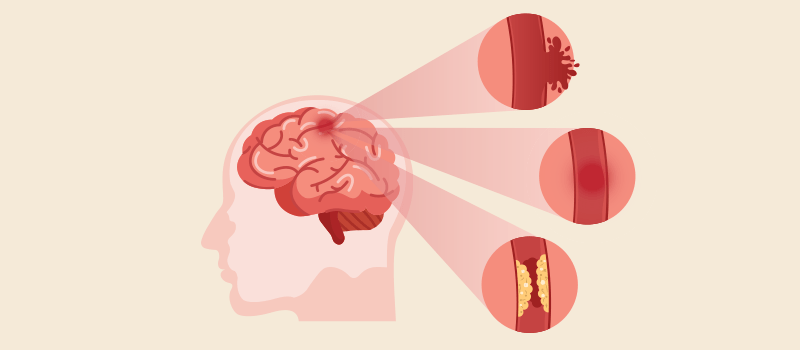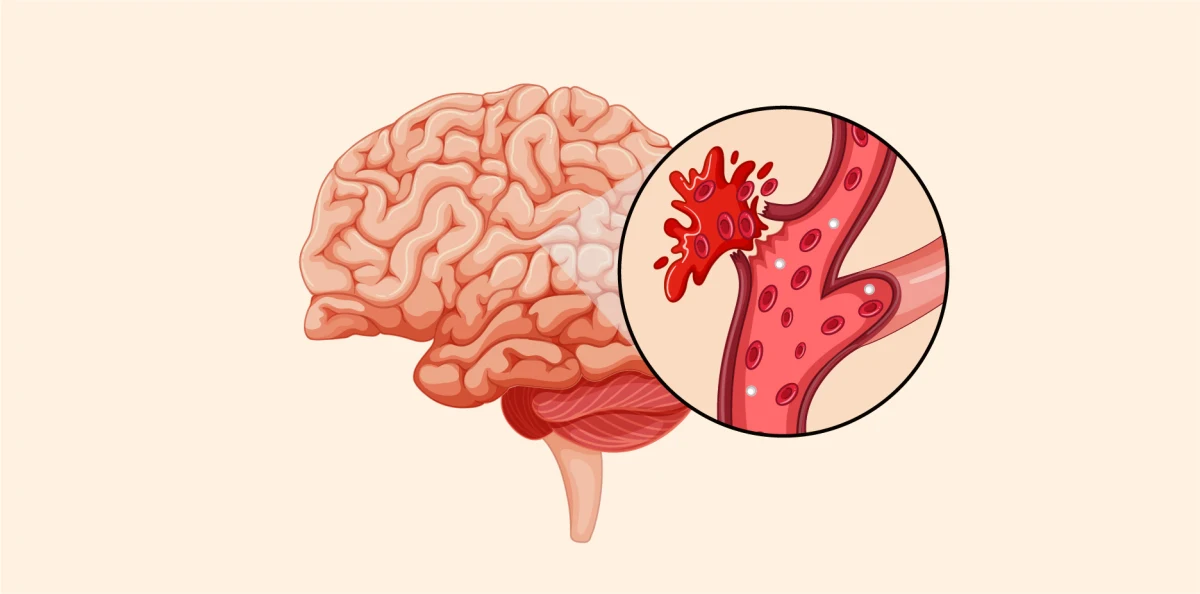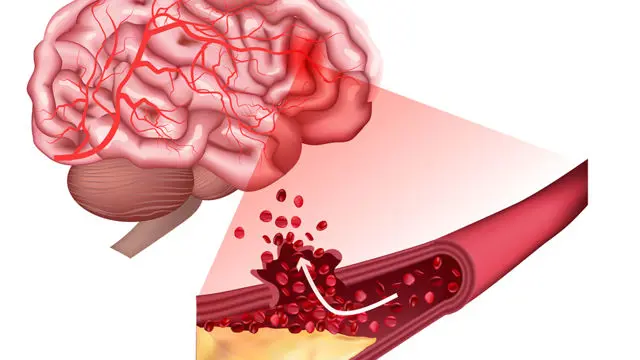A hemorrhagic stroke is a type of stroke that occurs when a blood vessel in the brain bursts, leading to bleeding within or around the brain. This condition is a medical emergency and requires immediate attention to minimize brain damage and improve the chances of recovery. This article explores the causes, symptoms, diagnostic methods, treatment options, and prevention strategies for hemorrhagic stroke, aiming to provide a comprehensive understanding of this serious health issue.
Contents
What is a Hemorrhagic Stroke?

Definition
A hemorrhagic stroke occurs when a weakened blood vessel ruptures, causing bleeding in or around the brain. This bleeding leads to increased pressure on brain tissues, resulting in damage and loss of function. There are two main types of hemorrhagic stroke:
- Intracerebral Hemorrhage (ICH): Bleeding occurs within the brain tissue itself.
- Subarachnoid Hemorrhage (SAH): Bleeding occurs in the space between the brain and the surrounding membrane (subarachnoid space).
Causes and Risk Factors
Causes
Several factors can cause a blood vessel in the brain to rupture, leading to a hemorrhagic stroke. These include:
- High Blood Pressure (Hypertension): Chronic high blood pressure can weaken blood vessel walls, making them more prone to rupture.
- Aneurysms: Abnormal bulges in blood vessels can burst, leading to bleeding.
- Arteriovenous Malformations (AVMs): Congenital abnormalities where blood vessels are tangled and prone to bleeding.
- Head Injury: Trauma to the head can cause blood vessels to rupture.
- Blood Thinners: Medications that reduce blood clotting can increase the risk of bleeding.
- Liver Disease: Conditions like cirrhosis can affect blood clotting and increase bleeding risk.
Risk Factors
Several risk factors increase the likelihood of a hemorrhagic stroke, including:
- Age: The risk increases with age.
- Gender: Men have a higher risk than women.
- Race: African Americans and Asians have a higher incidence of hemorrhagic stroke.
- Family History: A family history of stroke increases the risk.
- Lifestyle Factors: Smoking, excessive alcohol consumption, and drug abuse (particularly cocaine and amphetamines) increase the risk.
Symptoms

Early Signs
The symptoms of a hemorrhagic stroke can vary depending on the location and extent of the bleeding. Common early signs include:
- Sudden Severe Headache: Often described as the worst headache ever experienced.
- Nausea and Vomiting: Due to increased intracranial pressure.
- Weakness or Numbness: Usually affecting one side of the body.
- Difficulty Speaking or Understanding Speech: Sudden confusion or trouble speaking.
- Vision Problems: Blurred or double vision.
- Loss of Balance or Coordination: Difficulty walking or dizziness.
- Seizures: Especially if there is a history of seizures or head trauma.
Additional Symptoms
Other symptoms that may accompany a hemorrhagic stroke include:
- Loss of Consciousness: In severe cases, the person may become unconscious.
- Neck Stiffness: Particularly in subarachnoid hemorrhage.
- Sensitivity to Light: Known as photophobia.
Diagnosis
Initial Assessment
When a hemorrhagic stroke is suspected, rapid assessment and diagnosis are crucial. The initial evaluation includes:
- Medical History and Physical Exam: Assessing symptoms, medical history, and risk factors.
- Neurological Exam: Evaluating mental status, motor function, sensory function, and reflexes.
Imaging Tests
Imaging tests are essential for confirming the diagnosis and determining the cause and extent of the bleeding. Common imaging tests include:
- Computed Tomography (CT) Scan: The most commonly used test to quickly detect bleeding in the brain.
- Magnetic Resonance Imaging (MRI): Provides detailed images of brain tissues and can identify smaller areas of bleeding.
- Cerebral Angiography: An invasive test that uses contrast dye and X-rays to visualize blood vessels in the brain, often used to detect aneurysms and AVMs.
Additional Tests
Other tests that may be latoto performed include:
- Blood Tests: To check for blood clotting issues and other underlying conditions.
- Electrocardiogram (ECG): To evaluate heart function and detect arrhythmias.
- Lumbar Puncture (Spinal Tap): May be used to detect blood in the cerebrospinal fluid if a subarachnoid hemorrhage is suspected.
Treatment

Immediate Care
The primary goal of treatment is to stop the bleeding, relieve pressure on the brain, and stabilize the patient’s condition. Immediate care may include:
- Medication: To reduce blood pressure, prevent seizures, and manage pain.
- Surgery: In some cases, surgery may be required to remove the blood, repair the ruptured blood vessel, or relieve pressure on the brain. Common surgical procedures include:
- Craniotomy: Opening the skull to access and repair the bleeding vessel.
- Endovascular Coiling: A minimally invasive procedure to block blood flow to an aneurysm.
- Monitoring and Supportive Care: Intensive care unit (ICU) monitoring to manage vital signs and prevent complications.
Long-Term Management
Long-term management focuses on rehabilitation and preventing future strokes. This may include:
- Physical Therapy: To improve strength, balance, and coordination.
- Occupational Therapy: To help with daily activities and regain independence.
- Speech Therapy: To address speech and swallowing difficulties.
- Medications: To manage risk factors such as high blood pressure, high cholesterol, and diabetes.
- Lifestyle Changes: Encouraging a healthy diet, regular exercise, quitting smoking, and limiting alcohol intake.
Prevention
Managing Risk Factors
Effective prevention strategies involve managing risk factors and adopting a healthy lifestyle. Key prevention measures include:
- Controlling Blood Pressure: Regular monitoring and medication adherence to manage hypertension.
- Healthy Diet: A balanced diet low in salt, saturated fats, and cholesterol.
- Regular Exercise: Engaging in moderate physical activity most days of the week.
- Avoiding Smoking and Excessive Alcohol: Quitting smoking and limiting alcohol consumption.
- Managing Chronic Conditions: Proper management of diabetes, high cholesterol, and other chronic conditions.
- Regular Check-Ups: Routine medical check-ups to monitor and manage health conditions.
Awareness and Education
Public awareness and education about the symptoms and risk factors of hemorrhagic stroke are crucial. Prompt recognition of stroke symptoms and immediate medical attention can significantly improve outcomes.
Conclusion
Hemorrhagic stroke is a severe and life-threatening condition that requires prompt diagnosis and treatment. Understanding the causes, recognizing the symptoms, and taking preventive measures are vital in reducing the risk and improving outcomes. Advances in medical technology and treatment options continue to enhance the management of hemorrhagic stroke, offering hope for better recovery and quality of life for affected individuals. Through awareness, education, and proactive healthcare, the impact of hemorrhagic stroke can be mitigated, ultimately saving lives and promoting healthier communities.
Read More Article About “Rhasidat Adeleke: Ireland’s Sprinting Sensation 2024“

